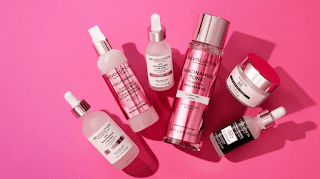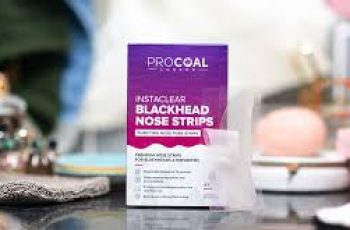
Can glycolic and lactic acids be used together?
Both glycolic and lactic acids belong to the alpha hydroxy acid (AHA) family. Both ingredients help with chemical exfoliation by working on the outer surface of the skin and removing the buildup of dead skin cells, dirt, and impurities. By clearing this residue from your face, your skin will look fresher and more revitalized, and fine lines and wrinkles will be significantly reduced. You’ll find that your other skincare products absorb quickly and show results quickly without having to compete with the barrier created by dead skin cells.
Each acid can be formulated in different percentages, with glycolic acid being the most effective of the two. Due to its smaller molecular size, it can penetrate deeper into the skin. This doesn’t necessarily mean that glycolic acid is the most effective, but it is better suited for people with combination or oily skin. For dry skin that is prone to mild sensitivity, lactic acid can step in and exfoliate without worrying about irritation. Lactic acid’s molecular size is very large compared to glycolic acid, so it can’t penetrate too deep into the pores and instead works on the outer surface. Due to the acid’s hydrating properties, it also hydrates the surface of the skin, locking moisture into the protective barrier.
Now that I’ve given you a quick review of the main benefits of these acids, let’s take a closer look at whether or not you can use glycolic and lactic acid together.
Can I use glycolic acid in the morning and lactic acid at night?
You can, but only if this habit keeps your skin happy and healthy. If you want my advice, I recommend using lactic acid in the morning and glycolic acid at night. No matter what acid you use, it’s important to wear an SPF 30 or higher sunscreen every day, even on cloudy days.
The effectiveness of a formula and the percentage of active ingredients determine how well it works on your skin. For example, cleansers and toners have lower amounts in their formulas than serums and moisturizers.
Should I start with glycolic or lactic acid?
If you’re new to acids or might want to use both in your routine, it’s best to start with caution. With that in mind, start with lactic acid, as it’s gentler and provides extra hydration. Once your skin has developed a tolerance for it, you can switch to a glycolic acid formula. Remember, you must perform a 24-hour patch test on any skincare product to ensure your skin is comfortable and to avoid unnecessary irritation. If you have any concerns, it is best to consult a doctor, dermatologist, or medical professional for reassurance.
Is Lactic Acid a Good Exfoliant?
Yes, lactic acid is a good exfoliant. You will find this acid often mixed into a variety of formulas. However, toners and cleansers are the most common products that contain active lactic acid. When using exfoliating toners, the acid content is quite high, but since toners are products that are generally not left on the skin for a long time, the irritation to the skin is minimal.
Since lactic acid is the most gentle and effective chemical exfoliant, everyone can benefit from using it in their daily skincare routine. However, if you have a very oily or acne-prone skin type, you should choose a formula that contains BHA, salicylic acid.
Can I use glycolic acid after a peel?
No, it is best to avoid using glycolic acid after a peel. If you use a physical exfoliant to exfoliate your skin, I strongly recommend not using other forms of exfoliation on your skin. Although glycolic acid may not seem to work as effectively on the skin as it does on the dermis, it can actually penetrate all layers of the epidermis. This can cause over-irritation and lead to negative consequences like redness, flaking, itching and rashes. You’ll also find that over-exfoliation can strip the skin of its natural oils (also known as sebum), making the face feel dry and uncomfortable.
Does Lactic Acid Stimulate Collagen Formation?
Yes, it does! With regular use, lactic acid can improve signs of aging like fine lines and wrinkles and stimulate collagen production. In about 4 weeks, you’ll see an improvement in the overall appearance of your skin. Signs of hyperpigmentation, dark spots, loss of elasticity and dullness on the skin’s surface are improved while damage to the natural protective barrier is minimized.
Does Glycolic Acid Whiten Skin?
No, glycolic acid does not whiten skin. However, it can help fight signs of uneven skin tone, dark spots and hyperpigmentation. It does this by working on the surface of the skin and shedding dead skin cells. When dead skin cells build up and are not removed, the overall complexion appears dull and lackluster. Dark spots and other forms of sun damage can also appear darker. By removing the excess, unwanted layer, it removes pigmentation from areas of uneven skin tone, revealing a brighter, more even complexion.
Can Lactic Acid Shrink Pores?
Yes, it can make pores look less noticeable. The problem with pores is that once enlarged, they can no longer be reduced. Large pores are not the end of the world, although they can be difficult and frustrating. With the help of lactic acid, you can keep them free from any pollutants.
So today I hope I have answered a few questions about using glycolic and lactic acid together. If you have any other questions, don’t forget to follow us on Procoal’s Instagram.


